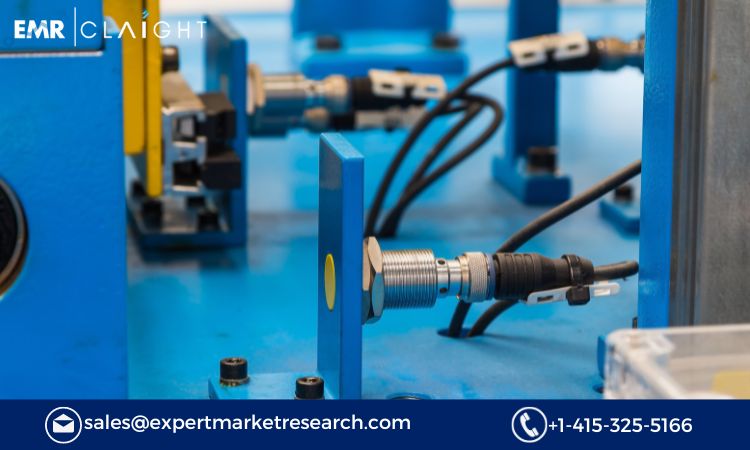According to a new report by Expert Market Research titled, “Photoelectric Sensor Market Size, Share, Analysis, Report and Forecast 2024-2032″, In an increasingly digital world, sensors play a pivotal role in transforming industries. Among these, photoelectric sensors stand out as essential components across various sectors, enabling automation, efficiency, and safety. As we delve into the period spanning 2024 to 2032, a comprehensive analysis of the photoelectric sensor market reveals intriguing insights, promising growth opportunities, and key trends that will shape the industry landscape. This article explores the size, share, growth trajectory, segmentation, future outlook, and key players driving the photoelectric sensor market forward during this forecast period.
Photoelectric Sensor Market Overview
The photoelectric sensor market is poised for significant expansion from 2024 to 2032, driven by the escalating demand for automation and the integration of sensors in diverse applications. These sensors utilize light beams to detect the presence, absence, or distance of objects, offering versatility and reliability across industries such as manufacturing, automotive, healthcare, and consumer electronics.
Photoelectric Sensor Market Size and Share
The global photoelectric sensor market is projected to witness substantial growth, with market size expected to reach USD 3.83 billion by 2032, reflecting a CAGR of 7.6% during the forecast period. Factors contributing to this growth include technological advancements, the proliferation of IoT devices, and the adoption of Industry 4.0 practices.
Get a Free Sample Report with Table of Contents – https://www.expertmarketresearch.com/reports/photoelectric-sensor-market/requestsample
Photoelectric Sensor Market Growth Trends
Several trends are expected to drive the growth of the photoelectric sensor market in the coming years:
- Miniaturization: Manufacturers are focusing on developing compact photoelectric sensors to meet the requirements of space-constrained applications, thereby enhancing their appeal across various industries.
- Integration of AI and Machine Learning: The integration of artificial intelligence (AI) and machine learning (ML) algorithms into photoelectric sensors enables advanced functionalities such as predictive maintenance, anomaly detection, and adaptive control, enhancing operational efficiency and reducing downtime.
- Expansion of IoT Ecosystem: The proliferation of Internet of Things (IoT) devices and the increasing adoption of wireless communication technologies are creating opportunities for the integration of photoelectric sensors into connected systems, facilitating real-time monitoring and control.
- Focus on Industry-specific Solutions: Manufacturers are developing specialized photoelectric sensors tailored to specific industry requirements, such as ruggedized sensors for harsh environments, high-speed sensors for industrial automation, and precision sensors for medical applications.
Photoelectric Sensor Industry Segmentation
The photoelectric sensor industry can be segmented into various categories based on different criteria, including type, technology, application, and end-user industry. Let’s delve into each segmentation:
- Type:
- Through-beam Sensors: These sensors consist of separate emitter and receiver units placed opposite to each other. They detect objects when the light beam is interrupted.
- Retro-reflective Sensors: Retro-reflective sensors utilize a reflector to bounce the emitted light back to the receiver. Object detection occurs when the light beam is reflected back.
- Diffuse-reflective Sensors: These sensors detect objects based on the reflection of light from the object’s surface. Unlike retro-reflective sensors, they do not require a separate reflector.
- Technology:
- Visible Light Sensors: These sensors operate in the visible light spectrum and are commonly used for applications where visible light sources are present.
- Infrared Sensors: Infrared sensors operate in the infrared spectrum, offering advantages such as enhanced sensitivity and reliability in environments with ambient light.
- Ultraviolet Sensors: Ultraviolet sensors are designed to detect ultraviolet light, making them suitable for applications such as flame detection, UV curing, and counterfeit detection.
- Application:
- Industrial Automation: Photoelectric sensors are extensively used in industrial automation applications such as object detection, positioning, and counting in manufacturing and assembly lines.
- Consumer Electronics: In consumer electronics, photoelectric sensors find applications in devices such as smartphones, cameras, and gaming consoles for functions like proximity sensing, gesture recognition, and ambient light sensing.
- Automotive: In the automotive industry, photoelectric sensors are employed for tasks such as collision avoidance, adaptive cruise control, and parking assistance.
- Healthcare: Photoelectric sensors play a crucial role in healthcare applications such as medical imaging, patient monitoring, and diagnostic equipment.
- Packaging and Labeling: These sensors are used in packaging and labeling machines for tasks such as product detection, label positioning, and package counting.
- Security and Surveillance: Photoelectric sensors are utilized in security and surveillance systems for motion detection, perimeter monitoring, and intrusion detection.
- End-user Industry:
- Manufacturing: The manufacturing industry is a major consumer of photoelectric sensors, employing them for automation, quality control, and safety applications.
- Automotive: In the automotive sector, photoelectric sensors are utilized in various applications, including vehicle navigation, driver assistance systems, and collision avoidance.
- Aerospace: Aerospace applications of photoelectric sensors include aircraft navigation, obstacle detection, and proximity sensing.
- Healthcare: In healthcare, photoelectric sensors are used in medical devices, diagnostic equipment, and patient monitoring systems.
- Consumer Electronics: Consumer electronics manufacturers integrate photoelectric sensors into devices such as smartphones, tablets, and wearable gadgets for user interface enhancements and environmental sensing.
- Food and Beverage: The food and beverage industry utilizes photoelectric sensors for packaging inspection, product sorting, and quality control.
Photoelectric Sensor Market Future Outlook
The future outlook for the photoelectric sensor market remains optimistic, with sustained growth anticipated across multiple sectors. Advancements in sensor technology, coupled with the increasing demand for automation and IoT-enabled solutions, are expected to drive market expansion. Furthermore, the emergence of new applications and the integration of sensors into smart devices and wearables are poised to create additional growth avenues.
Key Players
The photoelectric sensor market is characterized by the presence of several prominent players, including but not limited to:
- OMRON Corporation
- Autonics Corporation
- Panasonic Corporation
- KEYENCE CORPORATION
- Rockwell Automation, Inc
- SICK AG
- Others
Media Contact:
Company Name: Claight Corporation
Contact Person: James Rowan, Business Consultant
Email: sales@expertmarketresearch.com
Toll Free Number: US +1-415-325-5166 | UK +44-702-402-5790
Address: 30 North Gould Street, Sheridan, WY 82801, USA
Website: www.expertmarketresearch.com
